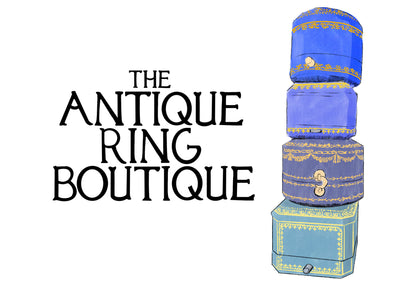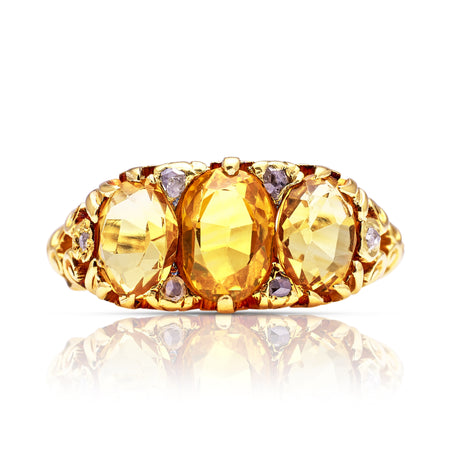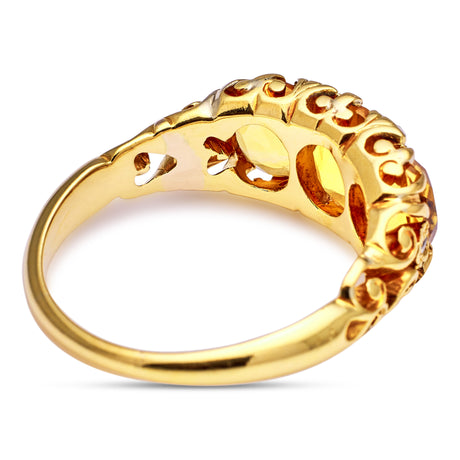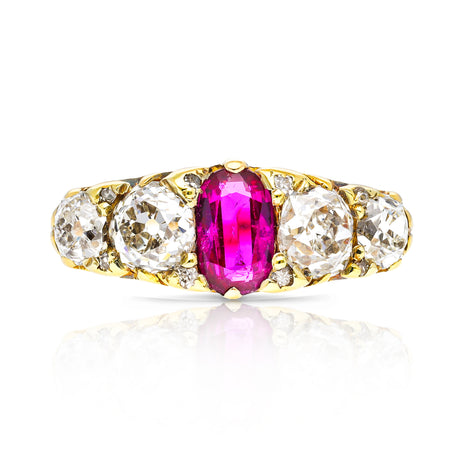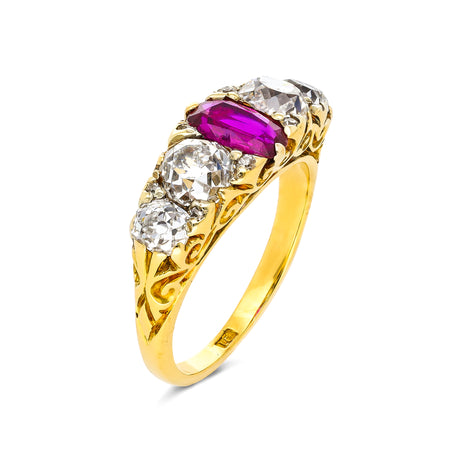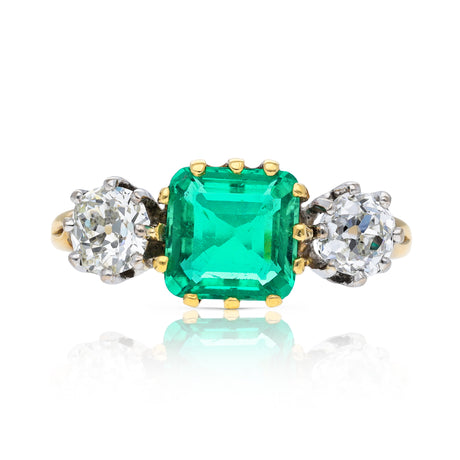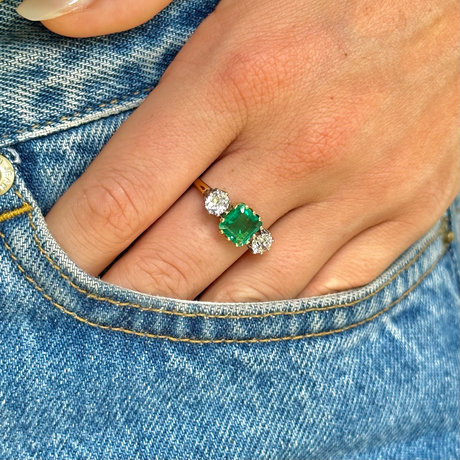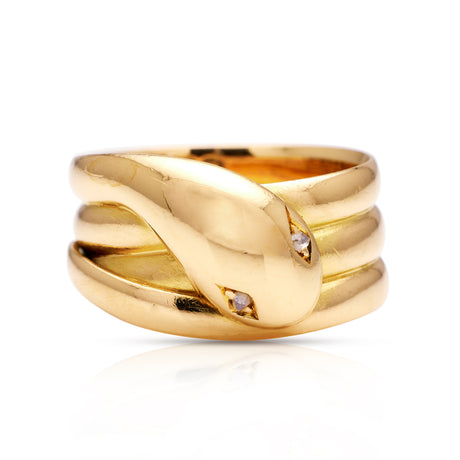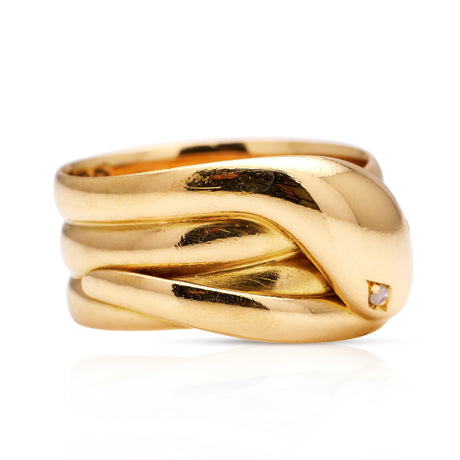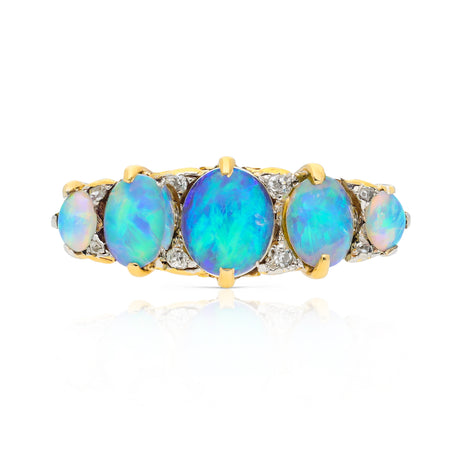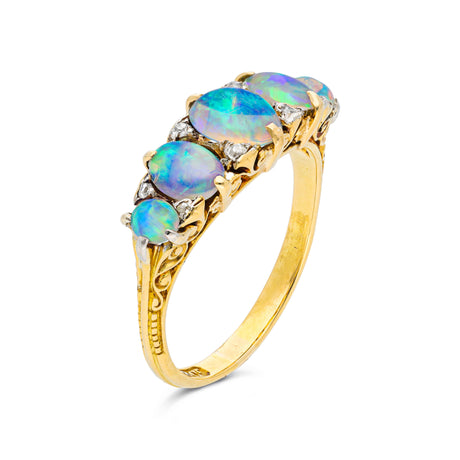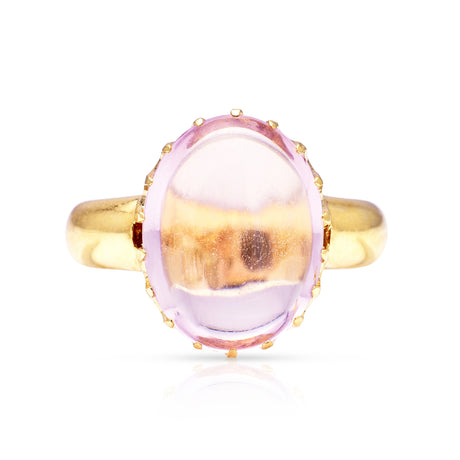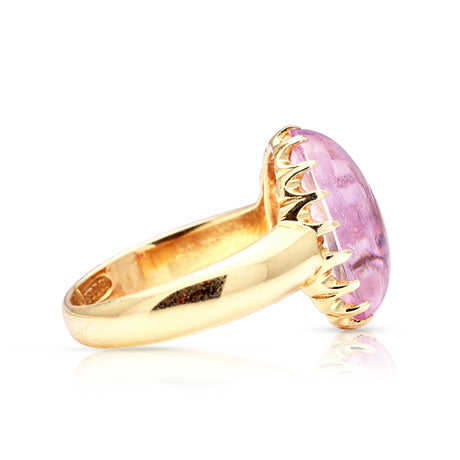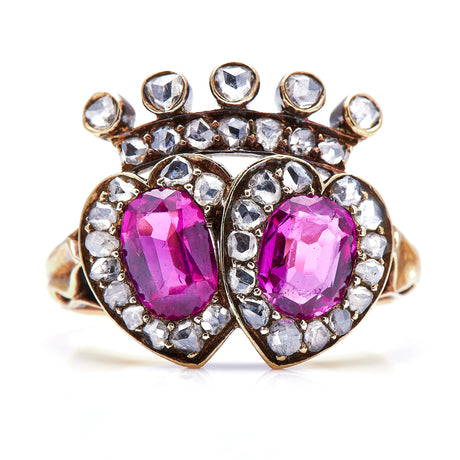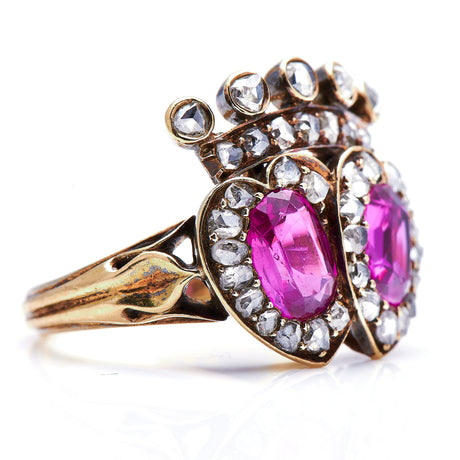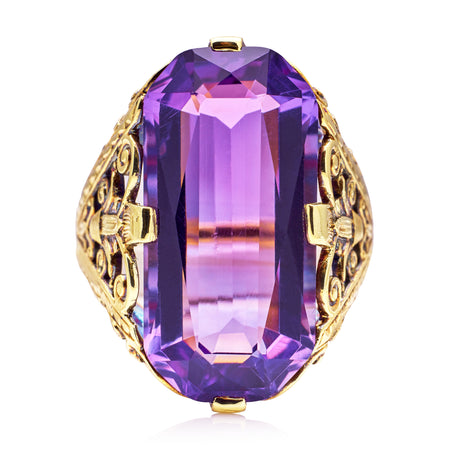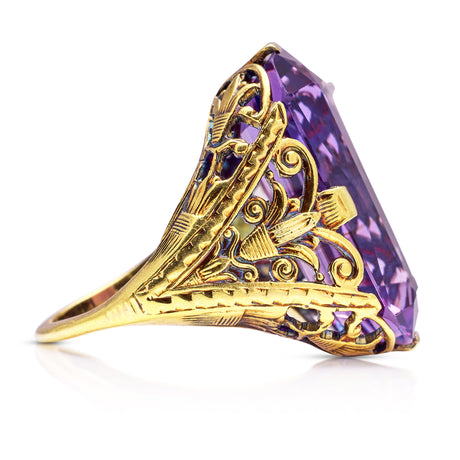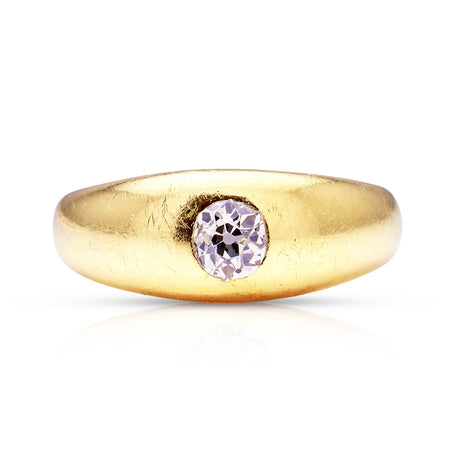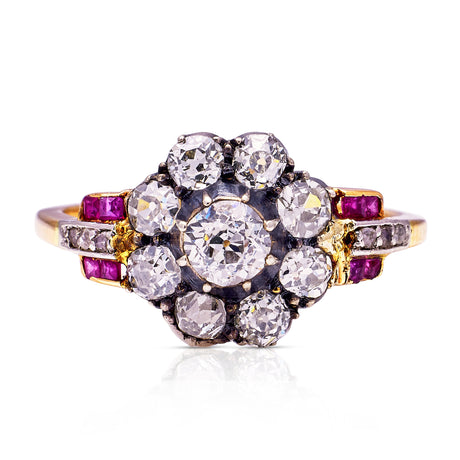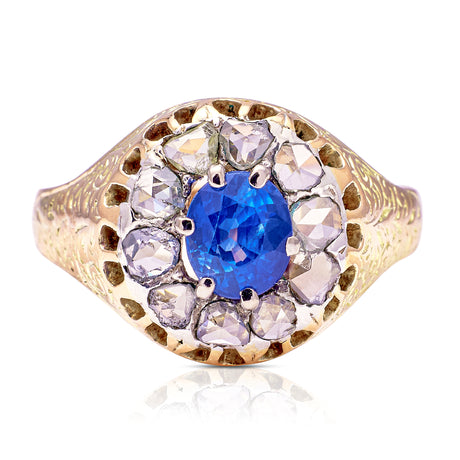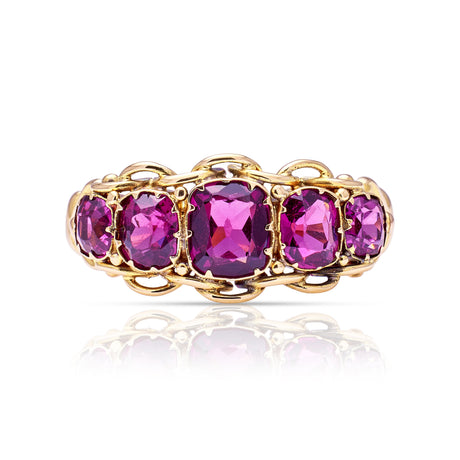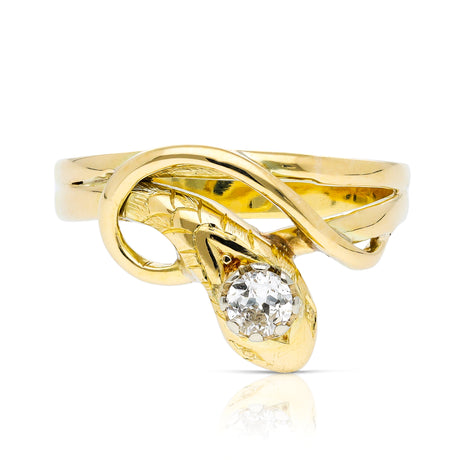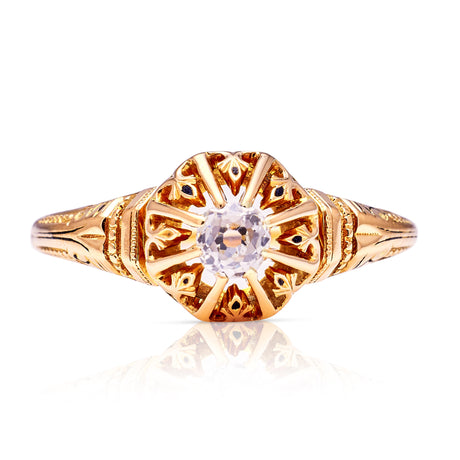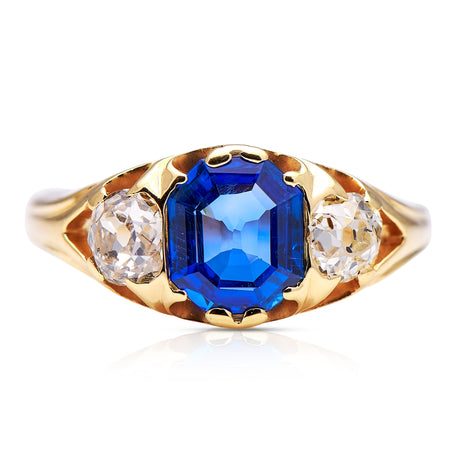The Victorian era holds a prominent place in British history. This influential period is named for the reign of Queen Victoria, who ascended the throne at the age of 18 in 1837. Her reign lasted for a massive 63 years, covering societal, industrial and social shifts, until her death in 1901.

Queen Victoria herself was something of a style icon, trendsetter and cultural influence. Her taste for gemstones, in particular, shaped the fashions of the time. Rings from the Victorian era also showcase the dramatic ups and downs of Victoria’s reign. From the delicate to the bold, each ring was made to symbolise something. Whether new love, fashion or homage, Victorian rings combine meaning with style — making them a popular choice to this day.
What is the Victorian era?
Jewellery design during the Victorian era reflected the changing times. The Industrial Revolution and the discovery of diamonds across the British Empire, for example, changed the trajectory of jewellery design forever. They brought diamonds, metals and other precious gemstones to the forefront of fashion.
While jewellery was more abundant and less painstaking to create than in the previous Georgian era, it was no less meaningful. The Victorian era is typically divided into three distinct periods — each of which mirrors the queen’s personal life and brings unique stories to jewellery.
The Romantic Period (1837-1860)
The Romantic Period of the Victorian era covered the early part of Victoria’s reign. It was influenced by the love between the young queen and her husband, Prince Albert. As such, jewellery from this time period is full of romantic symbolism. Acrostic rings often featured a coded message of love through the use of gems, with each stone's first letter forming a heartfelt word.

Romantic-era rings
Prince Albert's engagement with Queen Victoria was incredibly influential. As a symbol of eternal love, Albert gave Victoria a snake ring with emerald eyes. This token of their love deeply influenced the jewellery designs of the era.
The Grand Period (1861-1885)
While the Romantic Period reflected new love, the Grand Period marked longing and remembrance. Prince Albert's death in 1861 led to a long period of deep mourning for Queen Victoria. She adopted mourning jewellery, reigniting a tradition that began during the Georgian period.

Grand-period rings
Victorian mourning jewellery, therefore, signified a different but lasting connection to love. Black materials like onyx and jet represented grief and sorrow— an embodiment of Victoria's personal loss.
The Aesthetic Period (1885-1901)
While Queen Victoria herself continued to grieve, the populace found a love for the arts. This brought about the Aesthetic Movement.

Aesthetic period rings
The Aesthetic period championed the idea of “Art for art’s sake". It saw a shift from the heavy pieces of Victoria's early reign towards lighter, more delicate jewellery. Religious motifs were popular, signifying hope and a new era in British history.

An example of filigree
Victoria’s son, Edward VII, later adopted this trend, with his reign marking the Edwardian era and the subsequent Art Deco period after. The Edwardian period saw intricate filigree work, giving jewellery a refined feel that continued the work of the Aesthetic period.
What makes a ring Victorian?
Victorian rings featured many designs and meanings. From colourful and bold to the more sombre, there is a range of styles to discover.
What styles were used in Victorian rings?
Victorian-era rings encompass a huge array of trends and motifs. Emblematic of the Romantic period and royal engagement, serpent or snake rings adorned with diamonds, rubies or sapphires were a popular symbol of love. Acrostic jewellery featured different stones that spelt out "Regard" or "Dearest".
Victorian engagement rings with diamonds were highly popular, as the expanding empire made precious stones more available and affordable. This led to the popularity of half-hoop rings with diamonds or coloured gemstones in open-backed settings.
Victorian jewellers used various motifs depending on the period, such as:
- Hearts
- Crosses
- Anchors
- Skeletons
- Beetles.
There was a fascination with Greek, Roman, and Egyptian symbols due to archaeological findings. Scottish designs also grew in popularity following Victoria and Albert's purchase of the Balmoral estate.
Later, mourning rings used dark materials like onyx, garnet and black enamel. These rings sometimes bore the name or 'in memory of' — and could even include the lost one’s hair in their designs.
What cuts were used in Victorian rings?
Victorian-era rings were notable for careful and inventive craftsmanship. New technologies brought more precise and faster working, while higher availability of materials allowed experimentation.

Old mine and rose cut diamonds
Particular attention was given to gem cutting. Among the popular cuts used were the Rose Cut, Old Mine Cut, Cabochon, and the Old European Cut:
- The Rose Cut was a favourite of the era, with its round shape, flat base and domed top, looking like the petals of a blooming rose. Rose-cut diamonds increased in precision over time, enhancing their sparkle.
- The Old Mine Cut, with a square shape and rounded corners, looks similar to the soft, rounded edges and flat tops of today’s cushion-cut diamonds. This style brings an antique feel, with old mine-cut diamond rings always popular.
- Cabochon cuts, with their smooth, rounded top and flat base, were another popular feature of Victorian jewellery.
- The increasing use of machinery in gem cutting brought about the Old European Cut, a round cut that was popular in the late Victorian age. Its precision allowed for high levels of sparkle and attention-grabbing designs.

Cabochon
How were Victorian rings made?
Victorian-style rings are a testament to the creativity and changing societal structures of the era. As the Industrial Revolution took hold, the handcrafted jewellery trade embraced new techniques. Factories sprung up, allowing for faster, easier and more precise metalworking and jewellery cutting. This brought significant changes to the ring-making industry, revolutionising the process and bringing jewellery to the masses.
What jewels were common?
Victorian gems were carefully chosen and fashioned. Diamond rings, in the earlier years, were exclusive to the upper classes of society due to the scarcity and high cost of stones.
As the Victorian era progressed, the discovery of diamond mines in South Africa in the 19th century increased diamond availability and affordability. Half-hoop diamond rings, with three, five or even seven gemstones covering the top face of the ring, became extremely popular.[2]
Victorian ring makers used various materials in their designs, with five and three-stone rings common. These used many gemstones, such as:
- Agate
- Amethyst
- Emerald
- Garnet
- Pearls
- Quartz
- Topaz.
In certain designs, materials such as ivory, aquamarine and tourmaline made their appearances.
The symbolism of each piece played an integral role in the allure of Victorian rings. Snake designs, often featuring classic Victorian sapphire, ruby, emerald and diamond designs, symbolised love. Rings spelling "Regard" or "Dearest" with gemstones highlighted the Romantic period.

What metals were common?
The metals used in Victorian rings likewise mirror the societal and economic changes of the time. Earlier jewellers used 18-carat yellow gold rings for their creations, with it being a rare and precious material. The mid-19th century California Gold Rush helped increase availability, allowing the use of lower gold carats and plating.
Silver and white gold also became increasingly popular as colonial supplies grew. Coloured and rose gold – blends of golds and other alloys (commonly copper) that leant different shades to the resulting piece – were likewise used.

An example of cannettille
Metalworking techniques like repoussé, with intricate designs on malleable metal, and cannetille, featuring fine wires or thinly pressed materials, saw considerable popularity. Later on, machines and factory-based metalwork became more popular as industry thrived.
While new metals and techniques led to more robust pieces, it's important to remember that Victorian rings may not be as resilient as modern jewellery. It is advised to handle and wear these pieces with care, ensuring they are regularly checked by an expert for any necessary repairs or maintenance.
Why is the Victorian era popular now?
Victorian-era rings continue to be sought after today. Queen Victoria's reign was a golden age for jewellery making, with her regal style and personal life significantly influencing design trends. Antique Victorian rings, often distinguished by their striking gemstones, exquisite metals and ornate settings, carry her influence.
Most of all, Victorian jewellery is highly sentimental. Lockets, brooches and rings were often made for romantic reasons or to remember a lost loved one. Such symbolic and personal pieces resonated with the emotional tone of the time. Consequently, the Victorian era, with its unique blend of new designs, sentimentality and nobility, continues to captivate modern audiences.
